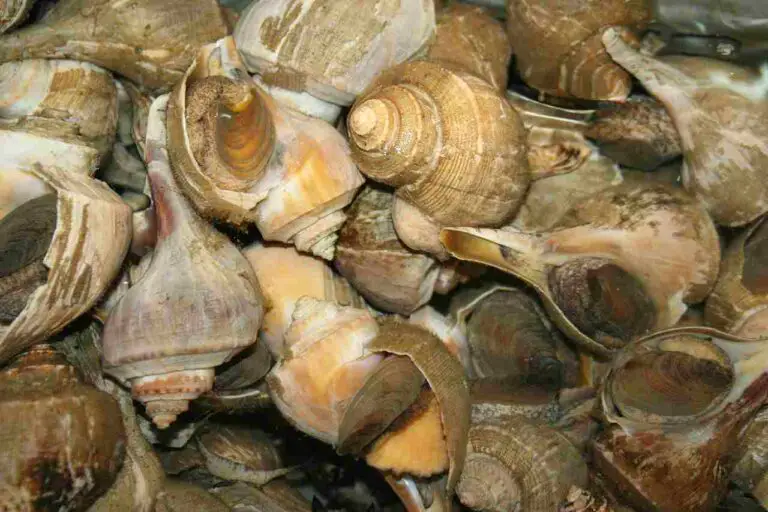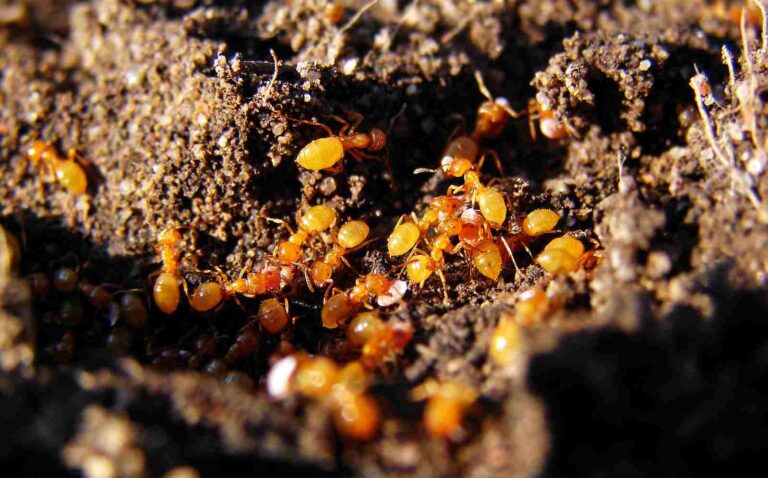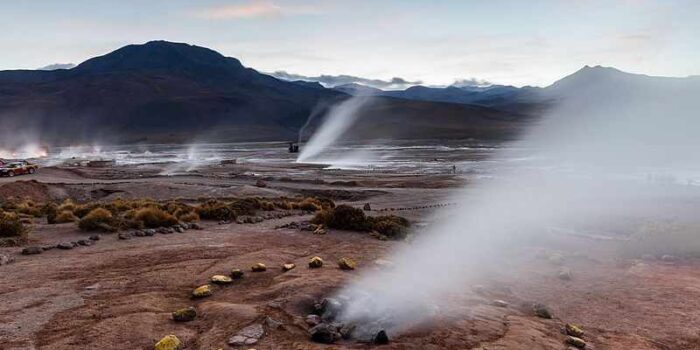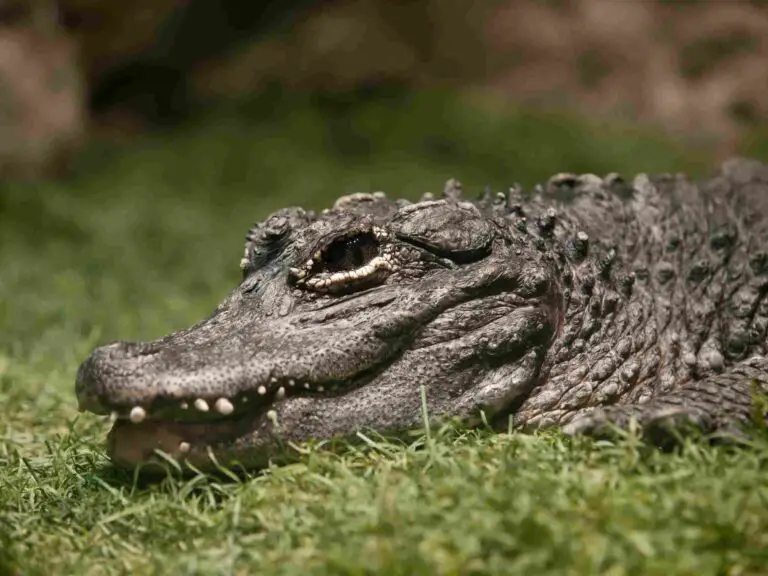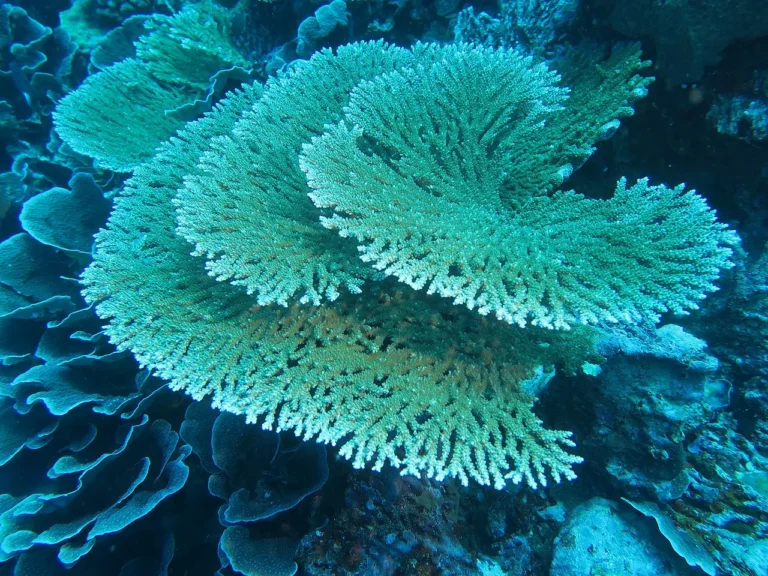Soil Conservation Definition, Principles, and Methods Explained
Soil conservation refers to a group of methods and practices which protect and preserve the important components of soil, from the harmful effects of the environment. This article discusses soil conservation definition, principles and methods, as outlined below;
-Soil Conservation Definition: 6 Wof Soil Conservation
-Principles of Soil Conservation
-Types, Techniques and Methods of Soil Conservation
-Biological Methods of Soil Conservation
-Physical Methods of Soil Conservation
-Chemical Methods of Soil Conservation
Soil Conservation Meaning: 6 Definitions of Soil Conservation
Soil conservation is the act of protecting the soil, through the implementation of measures that either prevent, or mitigate the effects, of unfavorable environmental factors.
The above definition implies that soil conservation can be understood within the contexts of environmental degradation and environmental remediation. This can also be interpreted to state that soil conservation is a practical concept, rather than a theoretical one, as portrayed in the following definition;
Soil conservation is a combination of all practices which are implemented in order to protect soil, by preventing and mitigating degradation [13].
Given that the purpose of soil conservation has been clarified, it is helpful to highlight some of the problems which are averted or prevented by soil conservation;
Soil conservation is the term used to describe a group of techniques that aim to prevent soil-related problems like leaching, deforestation, pollution and erosion, thereby preserving and retaining the quality of soil.
A major problem which is highlighted in many soil conservation efforts, studies and projects, is erosion. The reasons for this include the prevalence of erosion events, and the numerous negative effects of these events on soil.
Considering that soil is itself a natural resource [4], soil conservation, especially with respect to erosion-prevention, can be seen simply as a form of resource management. This means that soil conservation is relevant within the contexts of resource management, sustainable development, and sustainability. The following definition embodies this perspective;
Soil conservation is the sum total of efforts aimed to achieve environmental sustainability in the area of land and soil resources, by protecting soil structure, fertility, components, organisms and habitats.
As the above definition implies, the soil itself is an ecosystem, and a major component of the larger global ecosystem [5]. Its importance can be ascribed to the fact that soil provides nutrients which are recycled naturally on Earth, and which are a notable factor in the ecological energy pyramid.
Additionally, the definitions so far have indicated that soil conservation is important to the continuity of the Earth and its natural cycles. One reason why this is true, is the fact that soil is important for plant growth.
Although plants can be grown without soil through hydroponics, the role of soil as a supportive medium and a nutrient-carrier, is significant, especially in the field of agriculture. This is further elaborated in the definition below;
Soil conservation is the protection and preservation of soil, to enable it remain useful for agriculture among other purposes, by implementing methods that minimize leaching, erosion and nutrient-loss, such as cover-cropping, ridge and terrace building, and mulching.
All methods mentioned in the definition above, are agricultural, and aimed to minimize soil and nutrient loss, and to ensure that soil retains its productivity.
Aside protecting and preserving available resources, soil conservation may involve measures to augment these available resources by providing supplements of sediments and minerals. Fertilizer may be provided in form of compost, chemical supplements, and biochar from pyrolysis, among others.
Another dimension from which we may view soil conservation, is its relevance as a means of optimizing overall environmental quality, by protecting other natural resources at the same time;
Soil conservation is the combination of techniques and measures to improve and maintain the quality of soil, thereby simultaneously optimizing air and water quality.
Principles of Soil Conservation
The three principles of soil conservation are reconnaissance, evaluation and implementation. We can also consider these three to be the stages of soil conservation.
Reconnaissance involves preliminary investigation and exploration of an area, to determine the condition of the soil. This stage is an aspect of soil management, which is a closely-related concept to soil conservation.
Evaluation is the use of various tools and methods to assess the soil, and to determine the quality of the soil in terms of nutrients, structure and composition.
This stage of soil conservation is used to acquire information on the existent problems as well as the needs of the soil, which forms the basis of decision-making with regards to techniques and equipment to be used for soil management.
Implementation is the final stage of soil conservation. It involves the application of techniques and methods to improve and preserve the quality of soil.
Various methods can be implemented for soil conservation. The choice of method used depends on the observations made and information collected, during evaluation/assessment of the soil.
Types, Techniques and Methods of Soil Conservation
Methods of soil conservation include crop rotation, no-tillage, cover-cropping, contour farming, windbreaks, pest and weed control, buffers, terracing, salinity management, mineralization, and stormwater management.
These methods can be categorized broadly into physical, chemical and biological methods of soil conservation.
Biological methods are those involving the use of organisms and organic matter like plants, microorganisms and organic manure. Physical methods involve the use of physical structures and mechanisms to protect soil, while chemical methods involve the use of chemical substances and processes.
it is important to note that the words “techniques” and “types” may be used to refer to these methods as well.
-Biological Methods of Soil Conservation
1). Crop Rotation as a Method of Soil Conservation
Crop rotation is a bio-agricultural method or technique of soil conservation whereby the type of crops planted on a soil is changed at intervals.
It can also be described as a method whereby the agricultural species in a farm are rotated across planting seasons, rather than repeating a single specie over a long period of time [2].
The primary reason behind crop rotation is to minimize the rate at which essential soil nutrients are depleted. Because of regularities in needs, growth patterns and demands; planting the same species of crops repeatedly can place a huge strain on a particular group of soil nutrients, causing them to be used up over time.
This can alter and degrade overall soil fertility, by disrupting the physicochemical equilibrium of the soil.
Benefits of crop rotation as a method of soil conservation include improved soil structure, mitigation of nutrient depletion, stability and physicochemical equilibrium, and mitigation of crop pests [17].
In order for crop rotation to be effective, the crops used in this practice must be chosen carefully [16]. Specific crops are chosen based on factors like soil type, water availability, and climate. Given the current prevalence of global warming and pollution, environmental factors are of great significance to crop rotation.
Various species of plants can be involved in crop rotation. In most practical scenarios, food crops are rotated with substitutes that are meant to momentarily renew and protect the soil, such as cover crops. This implies that cover-cropping is often a practical aspect of crop rotation.

2). No-Tillage Farming as a Method of Soil Conservation
Also known as conservation tillage, direct-drilling or zero tillage, no-tillage farming is method of soil conservation whereby planting is carried out with minimal disturbance of the soil.
A major reason for implementing this method, is to optimize the water-retention capacity of the soil [22]. No-tillage farming also reduces the risk of erosion, by minimizing the number of weak and loose areas of soil. It preserves soil structure and composition by limiting exposure of the internal layers of the soil.
Another advantage of no-tillage is that it optimizes microbial biodegradation in the soil ecosystem. By preserving structural equilibrium, the microbe population in soil is conserved, so that organic matter can be broken down effectively to release minerals that are useful to the soil.
The effectiveness and approach to no-tillage farming depends on the type of soil, plant species, climate and physicochemical conditions involved.
3). Cover-Cropping as a Method of Soil Conservation
Cover-cropping is a biological method of soil conservation whereby plants are grown to serve s a protective cover to the soil.
The basic aim of cover-cropping is to protect soil from erosion [19]. Most cover crops are equally effective at mitigating the impact of wind and runoff (water) on soil.
Other benefits of cover-cropping include manure provision, moisture retention, pest and weed control, provision of cattle forage, nutrient supply and recycling, soil structural preservation, and improvement of overall soil health.
With the rise in prevalence of problems like soil leaching and desertification, cover-cropping has become even more important as a means of soil conservation.
Characteristics of a good cover crop include drought tolerance, dense root system, physical resilience, rapid and competitive growth, and node-formation [1]. These characteristics make a plant specie to be effective when used as a protective cover for soil.
Examples of cover crops include legumes and cereals like sorghum, barley, cowpeas, rye, oats, millet, mustard, sorghum, and triticale.

4). Strip Cropping as a Method of Soil Conservation
Strip cropping is the planting of alternate rows of resilient crops to protect soil from erosion.
The method is most effective against wind erosion, and is most needed in sloping areas of land.
In strip cropping, different types of plants are usually grown simultaneously. These may include resilient species that tend to grow rapidly upward, and species that grow at a relatively-slow pace.
The alternate rows of crops, act as a barrier against incoming winds, breaking their stream of flow and greatly reducing their effect on the soil. To maximize their effectiveness, these rows are often positioned at 90 degrees to the direction of wind (or water) flow [10].
Like in cover cropping, examples of plant species suitable for strip cropping include legumes and cereals like soybeans, cotton, and corn.
5).Stormwater Ecological Management
This involves the use of plants to mitigate soil erosion by runoff in water streams and logged areas.
Other terms used to describe the method include grassed waterway cultivation and rain gardening. Basically, the plants are grown within the flow pathway of water streams, such that they are able to hold soil sediments in place as water flows downstream.
Stormwater management is most needed in undulating areas where water tends to flow extensively over the soil. Plants used must be resilient and have well-developed root systems. The presence of these plants within the flow channels, reduces the velocity of running water, while increasing the rate of infiltration.
6). Afforestation as a Method of Soil Conservation
Afforestation and reforestation both refer to the planting of trees in non-vegetated or sparsely-vegetated land.
This is a highly effective method of soil conservation, partly because of the biological activities induced by plants, in the soil.
Both terms slightly differ from each other. While afforestation is the planting of trees on previously barren land, reforestation is the planting of trees on once-vegetated land.
In both cases however, the objective is to cultivate crops that can effectively protect and preserve the soil.
Like afforestation, reforestation of barren land is known to have positive effects on the environment and ecosystem [23]. These practices reduce the susceptibility of soil to erosion, while improving soil fertility and overall quality.
7). Keyline Design as a Method of Soil Conservation
Keyline design is a biological method of soil conservation, whereby plants are cultivated along the contour lines that define the topography of a land area.
It may also be described as an agricultural landscaping technique that uses crops to control the dynamics of water resources across the land.
Keyline design is similar to contour farming, but takes more details into account. Introduced in the mid twentieth century, the method is aimed at maximizing the use of water and soil resources and reducing soil erosion, by slowing runoff flow-rate, and encouraging water spreading and infiltration.
It is an effective method for improving soil fertility, as it encourages moisture retention and equilibrium in the soil ecosystem, such that natural processes like biodegradation and nitrogen fixation can occur undisturbed.
The suitability and effectiveness of keyline design, depends on the topographic characteristics of the land, and the physicochemical qualities of the soil.

8). Contour Farming as a Method of Soil Conservation
Like keyline design, contour farming involves cultivation of plants along the contours of sloping land [9].
In contour farming, crops are grown in rows, such that they obstruct the flow pathway of runoff or wind down a slope. This configuration helps to prevent soil from being eroded by such elements, thereby conserving soil.
The use of contour farming dates long before keyline design was introduced, therefore it does not take some details like watershed dynamics, into account. Rather, the topography of the land and the direction of fluid flow are considered.
Contour farming can be achieved using a combination of steps and techniques that may include terracing and channel-integration.
9). Wind-breaking and Buffer-stripping as Methods of Soil Conservation
Windbreaks and buffer strips (or stream-buffers) are plant barriers used to reduce the erosive effect of wind and water respectively.
In addition to soil conservation, these practices help to protect the biotic components of the ecosystem from the disruptive potential of these elements. Windbreaks and buffer strips are most needed where the weather conditions tend to be extreme, and in regions that are prone to natural hazards like mass movement of sediments.
Plants used to build such barriers must be resilient and well rooted, having sufficient, rapid overgrowth to serve as shelter to the soil and biotic components. Evergreen brushes and trees are usually suitable.
10). Microbe Cultivation as a Method of Soil Conservation
Microbe cultivation is a biological method of soil conservation whereby soil microorganisms are used to naturally enhance and maintain the quality of soil.
To support the growth of these soil microorganisms, nutrients can be supplied to the soil from an external source. More microbes can also be introduced into the soil, as a means of augmentation. These practices are similar to what is done in environmental remediation.
The microbes, such as bacteria and fungi, contribute to soil fertility by breaking down organic matter to release minerals that are needed by plants. They may also breakdown contaminants like hydrocarbons and heavy metals, converting these to less-harmful byproducts [21].
Aside microorganisms, other soil organisms like earthworms are also useful in soil conservation [3]. These organisms aerate the soil, improve soil structure and moisture retention, and play roles in nutrient fixation through their activities.
11). Organic Fertilization as a Method of Soil Conservation
While the use of supplements is an effective way to improve soil fertility, there are some harmful effects associated with synthetic fertilizer application [15].
These effects may involve the soil itself, as well as other components of the ecosystem. They range from pH imbalance to eutrophication, and may affect biotic and abiotic entities alike.
As a way of mitigating the negative prospects of soil conservation efforts, organic fertilizer can be used in place of synthetic ones.
Also known as green manure, organic fertilizer comprises of biologically-derived materials, or biomass, which undergoes decomposition or biodegradation to produce inorganic minerals that are essential for plant growth.
Organic fertilizer has the advantage of being renewable and full compatible with the ecosystem. The degradation of these organic materials in the soil, supports effective nutrient-cycling and optimizes the natural processes needed for the continuity of the ecosystem, as defined by the energy pyramid and the food chain.
Sources of green manure or organic fertilizer include agricultural waste, municipal food waste, and forest residue. The use of these materials should not lead to total replacement of synthetic fertilizers however. Rather, they can supplement the synthetic fertilizers, thereby preventing over-reliance on one nutrient source.
-Physical Methods of Soil Conservation
12). Terracing as a Method of Soil Conservation
Terracing is a soil conservation method whereby multiple, horizontal beds or steps are carved or constructed across a sloping land, to serve as barriers controlling the flow of water downslope and mitigating erosion.
Because of the presence of these steps (or terraces), terrace farming significantly reduces the effectiveness of agents of erosion and denudation [11]. The velocity of flowing water, for example, reduces as the water streams down a terraced slope. This conserves soil by controlling sediment removal and leaching.
Construction of terraces is labor-intensive, and the method is mostly used in rural and developing areas where sophisticated agricultural-technology is not available. It is also commonly applied in water-prone areas like swampy terrains, where water levels are unstable throughout the year.
13). Dry Farming as a Method of Soil Conservation
Also known as ‘dryland farming’, dry farming is the cultivation of crops with no external water supply or irrigation.
The method is used in regions with low precipitation and moisture levels, and it leads to soil conservation by preserving the physicochemical equilibrium of the soil.
There are some criteria which must be observed in order for dry farming to be effective. One of these is the plant species; which should be drought-tolerant or at least capable of thriving with limited moisture.
It is also essential for there to be a mechanism for moisture to be captured, retained and conserved in the soil, so as to prevent deficiency [8].
Soils involved in dry farming must have significant depth and good moisture retention capacity. These factors enable dry farming to be optimal.
14). Stream Bank Protection as a Method of Soil Conservation
Along the banks of rivers and other water bodies, occasional flooding leads to erosion and removal of sediments [20]. This is called stream bank erosion or riparian erosion.
In extreme scenarios, the stream bank may cave-in and become a flood plain. Efforts to prevent this from happening are collectively referred to as stream bank erosion.
A notable method of stream bank protection is the construction of walls long stream banks. In place of walls, trees can also be planted, drains or stone pitches can be constructed.
Because of the use of vegetation in some instances, stream bank protection can be classified as bioengineering technique.
15). Overgrazing Control
The prevention of overgrazing is essential to soil conservation. This is because overgrazing removes soil cover, exposing the soil to erosion and other negative effects [7].
Overgrazing can also cause unhealthy compaction of soil, due to animals congregating within a relatively small area of land. This destroys soil structure and limits aeration.
The control of overgrazing is classified as a physical method because, although grazing is done by living organisms (cattle) only physical methods can be used to control the rate and pattern of grazing.
Basically, overgrazing is controlled by ensuring that cattle are mobile when grazing, and do not concentrate within any particular vegetated area for long.
16). Mulching as a Method of Soil Conservation
Mulching is a physical method of soil conservation whereby materials are used to cover the soil surface, so as to protect it from unfavorable environmental factors.
It is described as a physical method because the materials used in mulching may be organic or inorganic [14]. These include plant biomass, synthetic and biodegradable plastics.
Positive effects of mulching on the soil include moisture retention, soil solarisation and weed management [18].
By covering the soil surface, erosion and leaching are prevented, while evaporation is minimized, thereby reducing the need for irrigation.
-Chemical Methods of Soil Conservation
17). Salinity and pH Management
High salinity and acidity are major soil problems, especially in brackish or saltwater areas.
When saltwater is introduced into soil s a result of irrigation or intrusion, ions like potassium (K+), sodium (Na+), and magnesium (Mg2+) are released excessively into the soil [12]. These ions disrupt the chemical equilibrium of the soil, and can have devastating effect on soil organisms, structure and aeration.
Soil pH is also altered when such chemical imbalances occur. Measures to address the problem include application of humic acid, as well as liming. These measures can reverse high salinity and acidity, while improving cation exchange capacity (CEC) of the soil.
18). Mineralization
As the name implies, mineralization is a method of soil conservation whereby nutrients are introduced and integrated into the soil, to improve fertility and overall soil quality.
The primary aim of mineralization is to chemically fortify soil with the required elements for survival of soil organisms and plants. There are various ways by which this can.be achieved, and they include organic matter (manure/ biomass) application, and synthetic chemical augmentation.
Minerals can also be supplied from lithic materials, such as carbonate rocks. When assimilated and broken down in the soil, these materials improve the chemical condition of the soil.
19). Eco-friendly Herbicides and Pesticides
The use of agricultural chemicals like pesticides and herbicides can cause soil degradation, especially when these chemicals are used excessively and are allowed to come in contact with the soil [6].
Pesticides and herbicides can also pollute groundwater when they infiltrate into the subsurface.
Since pest and weed control are essential farming practices, the chemicals used to carry out these measures must be compatible with the soil and ecosystem. This is a crucial factor which must be addressed to achieve sustainability in agriculture.
Bioherbicides and biopesticides are emerging tools which are produced organically and can be used to control weed and pests respectively. The use of such chemicals can contribute positively to soil conservation, by mitigating the hazardous side effects of pest and weed control.
Conclusion
Soil conservation refers to the methods and strategies used to protect, preserve and stabilize the soil.
Methods of soil conservation include;
- Crop Rotation
- No-Tillage Farming
- Cover-Cropping
- Strip Cropping
- Stormwater Ecological Management
- Afforestation
- Keyline Design
- Contour Farming
- Wind-breaking and Buffer-stripping
- Microbe Cultivation
- Organic Fertilization
- Terracing
- Dry Farming
- Stream Bank Protection
- Overgrazing Control
16. Mulching
- Salinity and pH Management
- Mineralization
- Eco-friendly Herbicides and Pesticides
Additionally, creating awareness is essential to soil conservation, as it informs the society of the importance of soil protection, and the ways by which it can be achieved.
References
1). Baligar, V. C.; Fageria, N. K. (2007). “Agronomy and Physiology of Tropical Cover Crops.” Journal of Plant Nutrition 30(8). Available at: https://doi.org/10.1080/01904160701554997. (Accessed 17 May 2022).
2). Basso, B.; Martinez-Feria, R. A.; Dumont, B. (2019). “Modeling crop rotations: capturing short- and long-term feedbacks for sustainability and soil health.” Advances in crop modelling for a sustainable agriculture (pp.217-238). Available at: https://doi.org/10.19103/AS.2019.0061.11. (Accessed 17 May 2022).
3). Bhadauria. T.; Saxena, K. S. (2010). “Role of Earthworms in Soil Fertility Maintenance through the Production of Biogenic Structures.” Applied and Environmental Soil Science 2010(1687-7667). Available at: https://doi.org/10.1155/2010/816073. (Accessed 17 May 2022).
4). Bhattacharyya, T.; Pal, D. K. (2015). “The soil: a natural resource.” Soil Science: An Introduction (pp.39-56). Available at: https://www.researchgate.net/publication/304057204_The_soil_a_natural_resource. (Accessed 17 May 2022).
5). Crews, T. E.; Rumsey, B. (2017). “What Agriculture Can Learn from Native Ecosystems in Building Soil Organic Matter: A Review.” Sustainability 9(4):578. Available at: https://doi.org/10.3390/su9040578. (Accessed 17 May 2022).
6). Joko, T.; Anggoro, S.; Sunoko, H. R.; Rachmawati, S. (2017). “Pesticides Usage in the Soil Quality Degradation Potential in Wanasari Subdistrict, Brebes, Indonesia.” Applied and Environmental Soil Science 2017(2):1-7. Available at: https://doi.org/10.1155/2017/5896191. (Accessed 17 May 2022).
7). Kairis, O.; Karavitis, C. A.; Salvati, L.; Kounalaki, A.; Kosmas, C. (2015). “Exploring the Impact of Overgrazing on Soil Erosion and Land Degradation in a Dry Mediterranean Agro-Forest Landscape (Crete, Greece).” Arid Land Research and Management 29(3). Available at: https://doi.org/10.1080/15324982.2014.968691. (Accessed 17 May 2022).
8). Kumar, P. S. M.; Sairam, M.; Maitra, S.; Praharai, S. (2021). “Soil Moisture Conservation Techniques for Dry land and Rainfed Agriculture.” Available at: https://www.researchgate.net/publication/357429224_Soil_Moisture_Conservation_Techniques_for_Dry_land_and_Rainfed_Agriculture. (Accessed 17 May 2022).
9). Kumawat, A.; Yaday, D.; Kala. S.; Rashmi, I. (2020). “Soil and Water Conservation Measures for Agricultural Sustainability.” Soil Moisture Importance. Available at: https://doi.org/10.5772/intechopen.92895. (Accessed 17 May 2022).
10). Mati, B. (2012). “AGRONOMIC PRACTICES FOR WATER MANAGEMENT UNDER SMALLHOLDER RAINFED AGRICULTURE TRAINING MANUAL No.4.” Nile Basin Initiative. Available at: https://www.researchgate.net/publication/344035759_AGRONOMIC_PRACTICES_FOR_WATER_MANAGEMENT_UNDER_SMALLHOLDER_RAINFED_AGRICULTURE_TRAINING_MANUAL_No4. (Accessed 17 May 2022).
11). Meliho, M.; Khattabi, A.; Nouira, A.; Orlando, C. (2021). “Role of Agricultural Terraces in Flood and Soil Erosion Risks Control in the High Atlas Mountains of Morocco.” Available at: https://doi.org/10.3390/earth2040044. (Accessed 17 May 2022).
12). Mugai, N. (2004). “Salinity characterization of the Kenyan saline soils.” Soil Science and Plant Nutrition 50(2):181-188. Available at: https://doi.org/10.1080/00380768.2004.10408467. (Accessed 17 May 2022).
13). Ogunsola, O. A.; Adedokun, V. A.; Adeniyi, O. D. (2020). “Soil Management and Conservation: An Approach to Mitigate and Ameliorate Soil Contamination.” Soil Contamination. Available at: https://doi.org/10.5772/intechopen.94526. (Accessed 17 May 2022).
14). Oseni, T. (2015). “The effects of organic and inorganic mulches on growth and yield of green bean (Phaseolus vulgaris L.) in a semi-arid environment.” Available at: https://doi.org/10.5251/abjna.2015.6.3.81.89. (Accessed 17 May 2022).
15). Pahalvi, H. N.; Majeed. L. R.; Nisar, B.; Kamili, A. N. (2021). “Chemical Fertilizers and Their Impact on Soil Health.” Microbiota and Biofertilizers, Vol 2 (pp.1-20). Available at: https://doi.org/10.1007/978-3-030-61010-4_1. (Accessed 17 May 2022).
16). Rana, S. S. (2020). “Lecture 17 Crop rotations.” MScTeaching: AGRON 513 PRINCIPLES AND PRACTICES OF ORGANIC FARMING. Available at: https://doi.org/10.13140/RG.2.2.21461.78566. (Accessed 17 May 2022).
17). Shah, K.; Modi, B.; Pandey, H. P.; Subedi, A.; Aryal, G.; Pandey, M.; Shrestha, J. (2021). “Diversified Crop Rotation: An Approach for Sustainable Agriculture Production.” Advances in Agriculture 2021(2). Available at: https://doi.org/10.1155/2021/8924087. (Accessed 17 May 2022).
18). Shirish, P.; Kelkar, S.; Bhaleraon, S. (2013). “Mulching: A Soil and Water Conservation Practice.” Available at: https://www.researchgate.net/publication/304692523_Mulching_A_Soil_and_Water_Conservation_Practice. (Accessed 17 May 2022).
19). Sumiahadi, A.; Acar, R.; Koyun, N. K.; Özel, A. (2019). “The Potential Use of Cover Crops for Controlling Soil Erosion Caused by Water.” 10th International Soil Congress 2019 – Successful Transformation toward Land Degradation Neutrality: Future Perspective, Ankara, Turkey. Available at: https://www.researchgate.net/publication/334119687_The_Potential_Use_of_Cover_Crops_for_Controlling_Soil_Erosion_Caused_by_Water. (Accessed 17 May 2022).
20). Toriman, M. I.; Ata, F. M.; Kamarudin, M. K.; Idris, M. (2013). “Bed-load sediment profile and effect of river bank erosion on river cross-section.” American Journal of Environmental Sciences 9(4):292-300. Availble at: https://doi.org/10.3844/ajessp.2013.292.300. (Accessed 17 May 2022).
21). Verma, A. (2021). “Bioremediation Techniques for Soil Pollution: An Introduction”, in K. F. Mendes, R. o. de Sousa, K. C. Mielke (eds.), Biodegradation Technology of Organic and Inorganic Pollutants, IntechOpen, London. Available at: https://doi.org/10.5772/intechopen.99028. (Accessed 17 May 2022).
22). Yu, H.; Peng, W.; Ma, X.; Zhang, K. (2011). “Effects of no-tillage on soil water content and physical properties of spring corn fields in semiarid region of northern China.” The Journal of Applied Ecology 22(1):99-104. Available at: https://www.researchgate.net/publication/51103758_Effects_of_no-tillage_on_soil_water_content_and_physical_properties_of_spring_corn_fields_in_semiarid_region_of_northern_China. (Accessed 17 May 2022).
23). Zhang, J. C.; DeAngelis, D.; Zhuang, J. Y. (2011). “Effect of Afforestation on Soil and Water Conservation.” Theory and Practice of Soil Loss Control in Eastern China (pp.213-241). Available at: https://doi.org/10.1007/978-1-4419-9679-4_11. (Accessed 17 May 2022).20).
